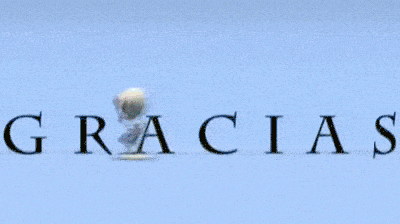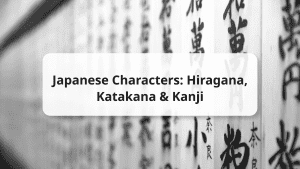How do you say Thank you in Spanish?
When learning a new language, a good starting point is understanding how to say “thank you” to get a feel of the language. Knowing how to be polite in a new language is also a huge bonus, natives will appreciate it!
Spanish is one of many Romance languages and is mostly confused with the Italian language, although, there are some differences between Italian and Spanish.
In this article, we will discuss the many ways to say “thank you” in Spanish and on which occasions are appropriate for each!
Now, let’s discuss how to say “Thank you” in Spanish in informal ways and formal ways.
Informal Ways to Say Thank You in Spanish
Informal or casual occasions include when thanking your friends, family, or people younger than you.

Thanks/Thank you – Gracias
The most common way of saying “thank you” in Spanish. It generally means “Thanks” but can also be perceived as “Thank you”.
Thank you very much – Muchas gracias
Adding “Very much” or muchas before “thanks” or gracias increases the levels of how thankful you are!
Thanks a lot – Muchísimas gracias
Similar to the previous one, just with muchísimas or “a lot”.
A thousand thanks – Mil gracias
Better than saying gracias a thousand times.
I thank you with all my heart – Te lo agradezco de todo corazón
A bit of a cheesy way to say “Thank you” in Spanish, but it works just as well!
I don’t know what I’d do without you – No sé qué haría sin tí
This phrase aids in thanking people and making them feel useful.
I owe you one – Te debo una
You should only use this phrase if you are willing to help this person out in the future.

Formal Ways to Say Thank You in Spanish
Formal occasions are when you thank people that you are not familiar with, co-workers, elders, or people with a higher social/work-related ranking than you (Your boss, the president etc).
I appreciate it – Te lo agradezco
You appreciate what they did for you.
I really appreciate it – Realmente lo aprecio
A more extreme version of the previous phrase.
I am really thankful – Estoy muy agradecido
Similar to the previous phrase; you are thankful.
That’s so kind of you – Eso es muy amable de tu parte
Because helping someone out is a form of kindness!
I appreciate your assistance in this matter. – Agradezco su ayuda en este asunto.
The ultimate formal way of saying “Thank you” in Spanish. You will probably find these in the conclusion of a formal email!

Using Verbs to Say Thank You in Spanish
You can use verbs to thank someone in Spanish. Although this is not commonly used, it is important to know. Here are a few examples of verbs to use.
To thank – Agradecer
An irregular verb, so it does not follow the rules of conjugation. Below is a table of how the verb changes depending on the personal pronoun used in the present tense:
| Pronoun | Conjugation |
|---|---|
| Yo (me) | Agradezco |
| Tú (you) | Agradeces |
| Él, ella, usted (he, she, you, formal) | Agradece |
| Nosotros (We) | Agradecemos |
| Ellos, ellas, ustedes (they/you all formal) | Agradecen |
Sentence examples:
- Yo te lo agradezco (I thank you)
- Nosotros te agradecemos (We thank you)
To appreciate – Apreciar
A regular verb, so there are no issues in figuring out the conjugation.
| Pronoun | Conjugation |
|---|---|
| Yo (me) | Aprecio |
| Tú (you) | Aprecias |
| Él, ella, usted (he, she, you formal) | Aprecia |
| Nosotros (We) | Apreciamos |
| Ellos, ellas, ustedes (they, you all formal) | Aprecian |
Sentence examples:
- Ella te aprecia (She appreciates you)
- ¿Tú me aprecias? (Do you appreciate me?)
To give – Dar
A regular verb. In this context, it means to “give” thanks or appreciation.
| Pronoun | Conjugation |
|---|---|
| Yo (me) | Doy |
| Tú (you) | Das |
| Él, ella, usted (he, she, you formal) | Da |
| Nosotros (We) | Damos |
| Ellos, ellas, ustedes (they, you all formal) | Dan |
Sentence examples:
- Yo te doy mi agradecimiento (I give you my thanks)
- Ellas te dan las gracias (They (females) give you their thanks)
Tener (To have)
Another irregular verb, so it will take a while to get the hang of it. In this context, it means that you “have” my thanks.
| Pronoun | Conjugation |
|---|---|
| Yo (me) | Tengo |
| Tú (you) | Tienes |
| Él, ella, usted (he, she, you formal) | Tiene |
| Nosotros (We) | Tenemos |
| Ellos, ellas, ustedes (they, you all formal) | Tienen |
Sentence examples:
- Tú tengo mi agradecimiento (You have my (me) thanks)
- Tú tienes nuestro aprecio (You have our (we) thanks)
What about You’re Welcome in Spanish?
How do you respond if someone thanks you?
The answer is de nada, the most common way to say “You’re welcome”. Besides that, there are many ways to say you’re welcome in Spanish depending on if the situation is formal or informal. This should be the next topic to focus on!

FAQs for saying Thank you in Spanish
A simple Gracias will do. You can also say Te lo agradezco de todo corazón. (I thank you with all my heart.) Or, I owe you one – Te debo una is also a good casual way to say Thank you in Spanish.
As we know, gracias means “thank you” in Spanish. Adding the words muchísimas or muchos will convert it to: Muchísimas gracias or Mucho gracias, which both mean “Thank you very much.”

Say Thank You in Spanish Like a Pro!
You now have an idea of how to say “Thank you” in Spanish! Learning how to say “Thank you” when learning a new language is important! This includes all languages, such as ”thank you” in French or ”thank you” in Italian!
If you struggle with a language, then getting an online language tutor is just the remedy you need! With a large variety of customizable lessons for many different languages, online language tutors at AmazingTalker will help you reach your fluency dreams!

















